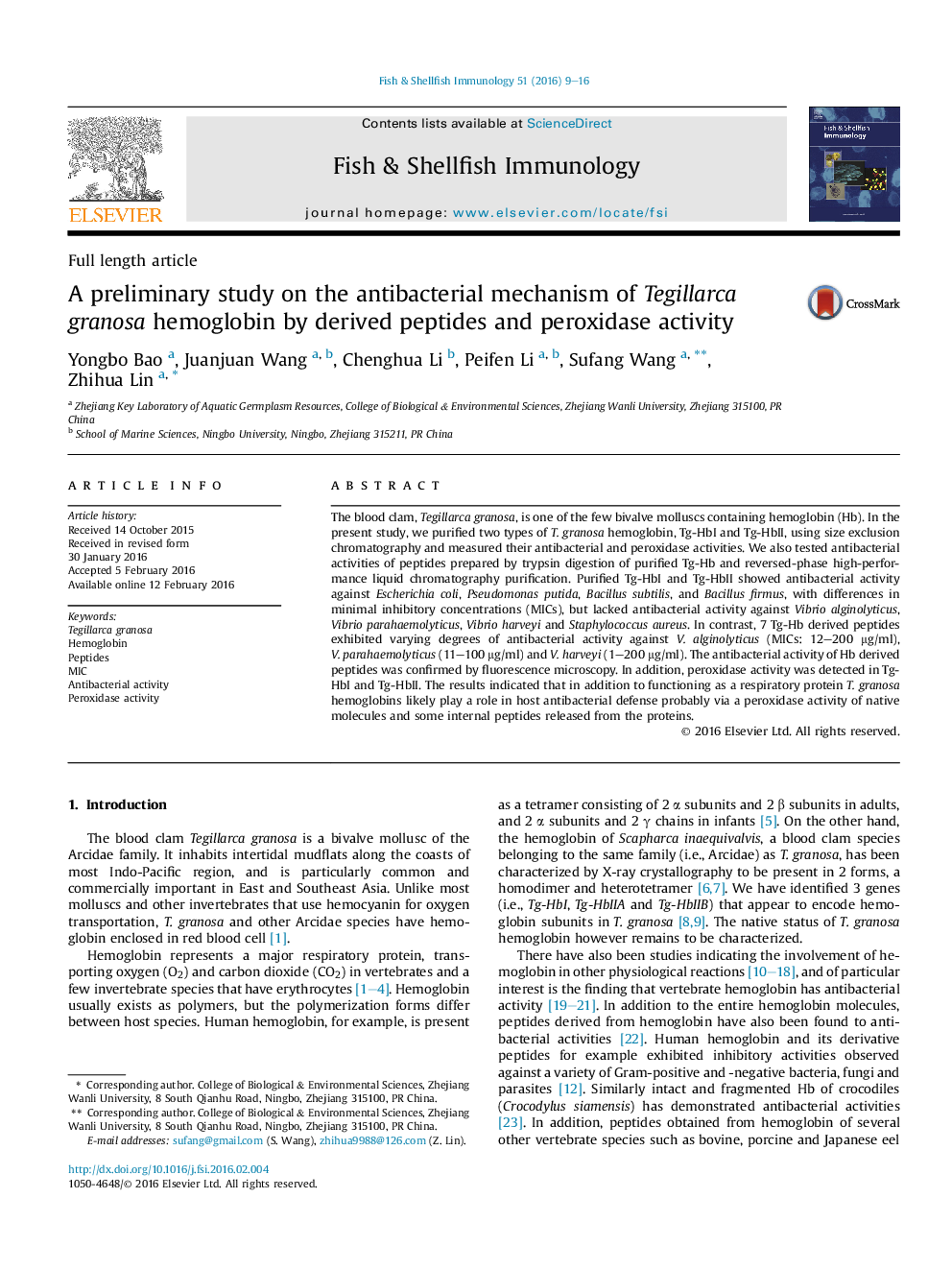| Article ID | Journal | Published Year | Pages | File Type |
|---|---|---|---|---|
| 2430710 | Fish & Shellfish Immunology | 2016 | 8 Pages |
•Isolation and characterization analysis of Hemoglobin from blood clam Tegillarca granosa.•Hemoglobin and derived peptides showed antibacterial activity toward different bacteria.•The results conceivable that hemoglobin function as an important multi-defense agent by different antimicrobial mechanism.
The blood clam, Tegillarca granosa, is one of the few bivalve molluscs containing hemoglobin (Hb). In the present study, we purified two types of T. granosa hemoglobin, Tg-HbI and Tg-HbII, using size exclusion chromatography and measured their antibacterial and peroxidase activities. We also tested antibacterial activities of peptides prepared by trypsin digestion of purified Tg-Hb and reversed-phase high-performance liquid chromatography purification. Purified Tg-HbI and Tg-HbII showed antibacterial activity against Escherichia coli, Pseudomonas putida, Bacillus subtilis, and Bacillus firmus, with differences in minimal inhibitory concentrations (MICs), but lacked antibacterial activity against Vibrio alginolyticus, Vibrio parahaemolyticus, Vibrio harveyi and Staphylococcus aureus. In contrast, 7 Tg-Hb derived peptides exhibited varying degrees of antibacterial activity against V. alginolyticus (MICs: 12–200 μg/ml), V. parahaemolyticus (11–100 μg/ml) and V. harveyi (1–200 μg/ml). The antibacterial activity of Hb derived peptides was confirmed by fluorescence microscopy. In addition, peroxidase activity was detected in Tg-HbI and Tg-HbII. The results indicated that in addition to functioning as a respiratory protein T. granosa hemoglobins likely play a role in host antibacterial defense probably via a peroxidase activity of native molecules and some internal peptides released from the proteins.
Graphical abstractFigure optionsDownload full-size imageDownload as PowerPoint slide
